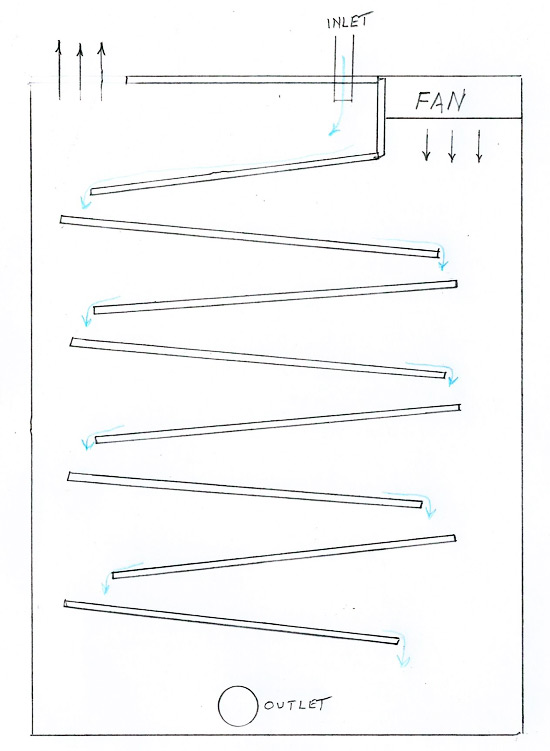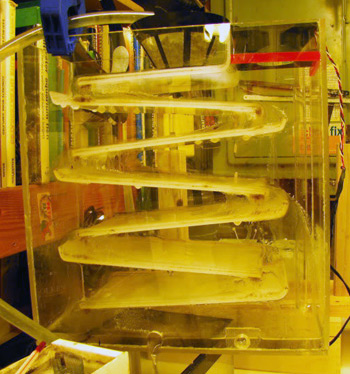Aquatic creatures, with the exception of mammals, are all cold-blooded animals. Some sharks and tuna slightly warm their blood through the movement of their muscles, but we don’t normally keep pelagic sharks or tuna in our tanks, so we don’t have to discuss those. But for the rest of the livestock we keep, it is important to maintain an appropriate temperature.
It is easier, to an extent, for these cold-blooded creatures to be a little cool than a little hot, as their metabolism is directly related to the temperature. The ocean temperature where they live doesn’t change appreciably, so they didn’t have to evolve mechanisms to deal with that.
We, on the other hand, evolved into warm-blooded organisms because the air temperature we live in changes with the seasons and weather conditions. Now, of course, most of us wear clothes (some of us wear silly looking clothes—and by the way, our clothes don’t make us look fat; our fat makes us look fat!), and those clothes allow us to live in a wide variety of climates, but so far, fish have not learned how to knit sweaters. I don’t know if they ever will, but without thumbs, that would be tough.
With our modern reef tanks that must be lit very brightly, we sometimes need a way to cool the water. For those of us who still use metal halide (MH) lighting, the need is even greater. That is one reason LED lighting is in and MH lighting is out . . . IMO.
The sea has much more surface area than our tanks, and much of the sea flows through the Arctic and Antarctic, so it is cooled and currents move it all over the earth. Also, most of the sea is much too deep for sunlight to penetrate and heat.
Different ways to cool it
Anyway, enough about the sea, as I am not Jacques Cousteau. We have a couple of choices when it comes to cooling our tanks. We can, as I did for many years, freeze a container of water and place it in our tank in the morning and, if it is still too hot, replace it with another one at night. That is tedious and can spike the temperature of the tank. Fish hate spikes of any kind. I think it is because of their fear of fish hooks, but I really don’t know.
We can buy an aquarium chiller, which is internally exactly like a room air conditioner except that instead of pushing air past cooling coils, the “Freon” is pumped through a titanium probe, which is placed in the tank. A waterproof temperature sensor regulates the water temperature. This is a very expensive mechanism to build, requiring a compressor and some semi-exotic metals. We can, however, build a simple “evaporative” cooler that will cool down the water a few degrees while using hardly any electricity.
The evaporative-cooling concept
Evaporative chillers operate on a simple procedure. Water is pumped over some plates in a thin sheet, and a fan blows air across the plates, causing some of the water to evaporate. When water evaporates, it takes heat with it. This will cause the aquarium water to evaporate faster, but only fresh water will be lost. The salt will not evaporate. You can see evaporative chillers on the roof of almost any large, air-conditioned building.
My DIY chiller design
You have to be a little handy to build this, but if you have a plastic supply company or even a glazier near you, they can cut the plates that you’ll need.
To build a chiller of this type you’ll need a tank, glass or plastic. Glass is a little harder to work with because you will need a hole near the bottom for the water to flow back to your aquarium. A glazier will be able to drill a hole for you. I used acrylic because I recycled an old wet-dry filter into a chiller.
- You need to build plates, which are just flat pieces of either glass or plastic that are the same dimensions as the inside of the enclosure you are using. The more plates you can fit, the better. They need to be glued into the enclosure in such a way that water pumped onto the top one runs across that plate, onto the next plate, then runs along that plate, falls to the next one, and so on all the way down to the bottom. To do this, the plates need to be on a slight angle so the water will keep flowing down.
- A small computer fan is mounted on the top. This fan will blow air down and across the plates and help evaporate the water. I like to have the air pushed rather than pulled through to keep the salt water off the fan, as those things are not built for this purpose.
- Water is pumped from the aquarium to the top of the chiller where, as described above, it runs in a thin sheet over the slightly angled plates to the bottom where there is a hole so the water can return into a sump or, like in my case, to the top of the aquarium (I have no sump, so I mounted it above my tank).
This small unit cooled my tank about 3 or 4 degrees because it was just a prototype and that was all the cooling I needed. My chiller measures about 5 inches by 16 inches with a depth of about 14 inches. My tank is 100 gallons. So, if I wanted to chill my 100-gallon tank by about 6 degrees, I would build it about two or three times the size of my current unit.
Since I switched to LED lighting, I no longer need the chiller, so I now use it to keep my 5-gallon blackworm tank cool, and it does a very good job at that.

You can see in the simple diagram that each plate is slightly offset from the one above it so the water can cascade from one to the other. Air is forced around the plates, causing some water to evaporate bringing the heat with it. These plates could also be built as a free-standing design that sits in a plastic tub with a small fan blowing across it.
Photo credit: Paul Baldassano



